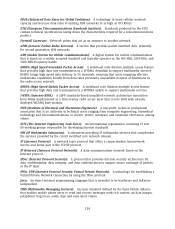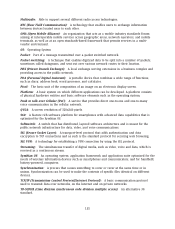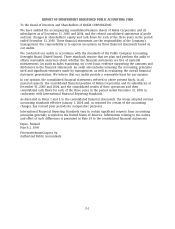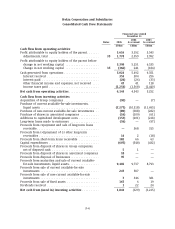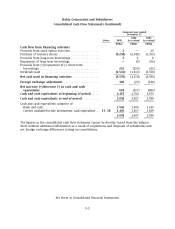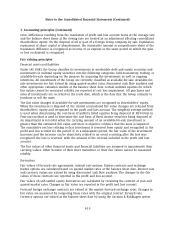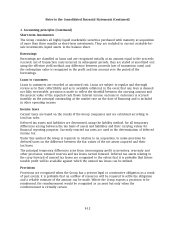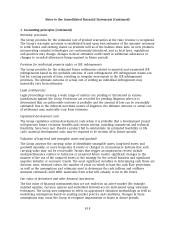Nokia 2005 Annual Report Download - page 146
Download and view the complete annual report
Please find page 146 of the 2005 Nokia annual report below. You can navigate through the pages in the report by either clicking on the pages listed below, or by using the keyword search tool below to find specific information within the annual report.Notes to the Consolidated Financial Statements
1. Accounting principles
Basis of presentation
The consolidated financial statements of Nokia Corporation (‘‘Nokia’’ or ‘‘the Group’’), a Finnish
limited liability company with domicile in Helsinki, are prepared in accordance with International
Financial Reporting Standards (‘‘IFRS’’). The consolidated financial statements are presented in
millions of euros (‘‘EURm’’), except as noted, and are prepared under the historical cost convention,
except as disclosed in the accounting policies below. The notes to the consolidated financial
statements also conform with Finnish Accounting legislation. On January 26, 2006, the Group’s
Board of Directors authorized the financial statements for issue.
As of January 1, 2005 the Group adopted IFRS 2, Share-based Payment. The standard requires the
recognition of share-based payment transactions in financial statements, including transactions
with employees or other parties to be settled in cash, other assets, or equity instruments of the
Company. Prior to the adoption of IFRS 2, the Group did not recognize the financial effect of share-
based payments until such payments were settled. In accordance with the transitional provisions
of IFRS 2, the Standard has been applied retrospectively to all grants of shares, share options or
other equity instruments that were granted after November 7, 2002 and that were not yet vested
at the effective date of the standard.
As of January 1, 2005 the Group adopted IAS 39(R), Financial Instruments: Recognition and
Measurement, which supersedes IAS 39 (revised 2000). Under IAS 39(R), hedge accounting is no
longer allowed under Treasury Center foreign exchange netting. This change is retrospective for
the Group as an existing IFRS user.
The comparative figures for 2004 and 2003 have been revised to reflect the adoption of IFRS 2 and
IAS 39(R) and the effects are summarized in the consolidated statement of changes in
shareholders’ equity, and further information is disclosed in the accounting policies and in Notes
to the consolidated financial statements.
The Group adopted IFRS 3, Business Combinations together with IAS 36(R), Impairment of Assets,
and IAS 38(R), Intangible Assets, as of January 1, 2005, resulting in a change in the accounting
policy for goodwill. Until December 31, 2004, goodwill was amortized on a straight line basis over
its expected useful life over a period ranging from two to five years and assessed for an indication
of impairment, periodically. In accordance with the provisions of IFRS 3, the Group ceased
amortization of goodwill from January 1, 2005 for all acquisitions made prior to March 31, 2004.
Accumulated amortization as of December 31, 2004 has been eliminated with a corresponding
decrease in the cost of goodwill. From January 1, 2005, goodwill is assessed for impairment
annually, and whenever there are indications of impairment. Under the transitional provisions of
IFRS 3, this change in accounting policy was effective immediately for acquisitions made after
March 31, 2004.
Consequent upon the adoption of IAS 21(R), The Effects of Changes in Foreign Exchange Rates, the
Group has changed its accounting policy for the translation differences of goodwill arising on
acquisitions of foreign companies made after January 1, 2005. Goodwill on acquisitions of foreign
companies made prior to that is translated to euros at historical rates. In accordance with
IAS 21(R), goodwill on acquisitions of foreign companies made after January 1, 2005, is translated
into euros at closing rates.
The impacts of IFRS 3 and IAS 21(R) are prospective from January 1, 2005. The adoption of IFRS 3,
IAS 21(R), IAS 36(R) and IAS 38(R) did not have any impact to the Group’s financial position, results
of operations or cash flows.
F-8


